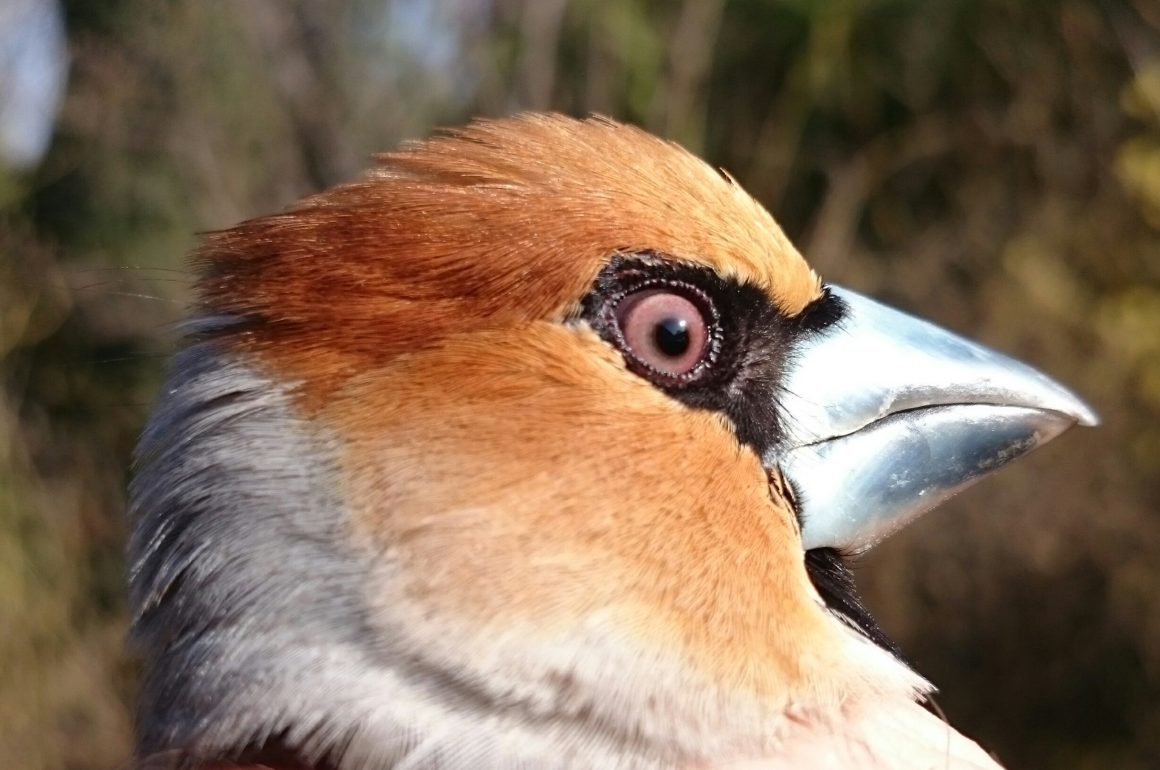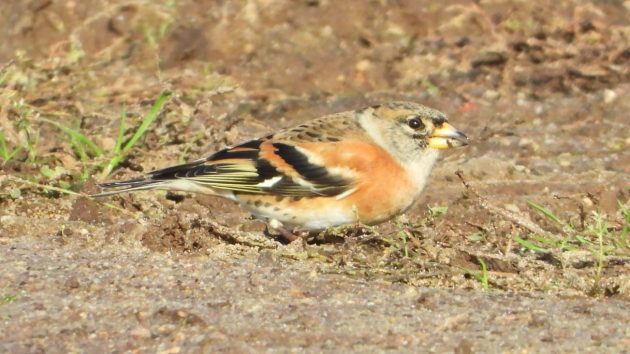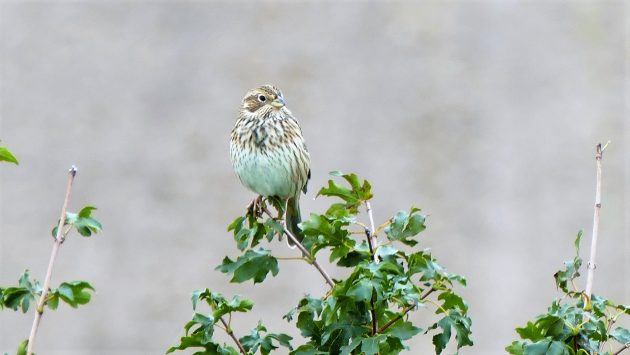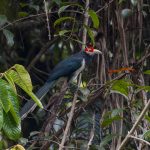
The Uckermark is located about 80 km northeast of Berlin. This area is easy to reach from Berlin by train. Interesting bird species can be observed in the Uckermark at any time of year.

Birdwatching in winter on slippery roads (photo: Elke Riedel)
A complete list of the birds of the Uckermark can be found here.
In autumn, large flocks of Bramblings migrate through the Uckermark. Ring finds prove that they come from Scandinavia and Siberia. Sometimes these flocks are mixed with Chaffinches. Bramblings usually overwinter in southwest and western Europe.

Brambling (photo: Klaus von der Borch)
The Hawfinch is widespread as a migratory bird, winter guest, and also as a breeding bird. It usually gives itself away in the treetops with its piercing “zig” call.

Hawfinch
During a group excursion, a participant found a young Hawfinch on the ground that had not yet fledged and was no longer being cared for by its parents. My son Jakob took over raising it after I explained to him that young Hawfinches could not bite so painfully. Jakob had been there when Hawfinches were ringed a few times and had seen the blood blisters on my fingers. The release of the young Hawfinch into the wild was successful.

Jakob feeds the young Hawfinch

Observation in a Hawfinch habitat
The Eurasian Nuthatch is a common bird in the forests and parks of the Uckermark. The German name “Kleiber” comes from the German word “kleben” (to stick together), as the Nuthatch blocks the entrance to its nest hole so that only it can just about slip in. To do this, it uses clay, wood mulch, pieces of wood, and tiny beetle parts. One of my current studies involves the DNA metabarcoding of these beetle samplings.

Eurasian Nuthatch
The Eurasian Jay also lives in forests, parks and groups of trees. This species is distributed in several subspecies across Eurasia. The Eurasian Jay can perfectly imitate the calls and songs of other bird species. As a beginner, an Eurasian Jay prompted me to quickly run out of a forest to count the supposed Greater White-fronted Geese – but it was only an Eurasian Jay imitating the calls of Greater White-fronted Geese. In September/October there is a large influx of Eurasian Jays from northeastern Europe.

Eurasian Jay
The Goldcrest can also be found in forests, preferably in coniferous forests. Along with the Common Firecrest, it is one of the smallest birds in Europe. A Goldcrest weighs around 5 grams. A bird weighing 5.5 grams is already considered fat. It is an incredible achievement that Goldcrests ringed in Germany fly as far as Italy (cross the Alps), Spain, and even as far as Algeria in North Africa (cross the Mediterranean). The furthest distance between the ringing location and the location where it was found again was 2.196 km! Its fine, high call is usually no longer audible to older bird watchers.

Goldcrest
A rare resident bird in Germany is the Crested Lark. A few specimens can be found in large livestock stables or on large flat roofs of industrial estates or shopping centers.

Crested Lark (photo: Silke Nessing)
The Long-tailed Tit is found in Germany in the subspecies Aegithalos caudatus europaeus. In western Germany, this subspecies has pronounced stripes above the eyes. In eastern Germany, including the Uckermark, white-headed Long-tailed Tits and intermediate birds (with only faint head stripes) are found. Since the subspecies Aegithalos caudatus caudatus, which also has a white head, lives in eastern Poland, Belarus, and northern Europe, field ornithologists confuse these two subspecies. I have never caught and ringed white-headed Long-tailed Tits of the subspecies Aegithalos caudatus caudatus – only dozens of white-headed Long-tailed Tits of the subspecies Aegithalos caudatus europaeus (source).

Long-tailed Tit of the subspecies Aegithalos caudatus europaeus
The Yellowhammer is a typical bird of open land and forest edges. During the breeding season, its typical song “si-si-si-SÜÜÜ” can be heard from far away. The song is reminiscent of Ludwig van Beethoven´s Symphony No. 5 in C minor, op. 67, 1st movement – Allegro con brio. Many of my bird watcher clients have been able to remember this bird well as a “Beethoven bird”. In winter, Yellowhammers often gather in larger flocks and can then be found near cattle stables and feed silos.

Yellowhammer
The slightly larger Corn Bunting is a rare breeding bird in Germany. However, here, in the Uckermark in eastern Germany, it can be found in good numbers. Its song is reminiscent of a “bundle of keys” or a coin that you twist on a table. The Corn Bunting does not require any special habitats. As a ground-nesting bird, it is happy with a path or roadside with wild plants, bad land with a bush or a tree as a singing place. On a distribution map of the Corn Bunting in Germany, you can almost still see the former border between western and eastern Germany. Eastern Germany is wilder and there are more badlands and unkempt roadsides – this is good for the Corn Bunting.

Corn Bunting (photo: Klaus von der Borch)

Open land in the Uckermark region, Germany: good habitats for Yellowhammer and Corn Bunting













As a German myself who has birded throughout the country, I cannot stress enough how amazing birdwatching in Brandenburg (and Mecklenburg-Vorpommern) is. Compared especially to western and south-western Germany, birdwatching in the North-East is in an entirely different league, it is like comparing your local village’s football club to FC Barcelona.
Thank you, Rolf, for highlighting this breath-taking area of Germany!